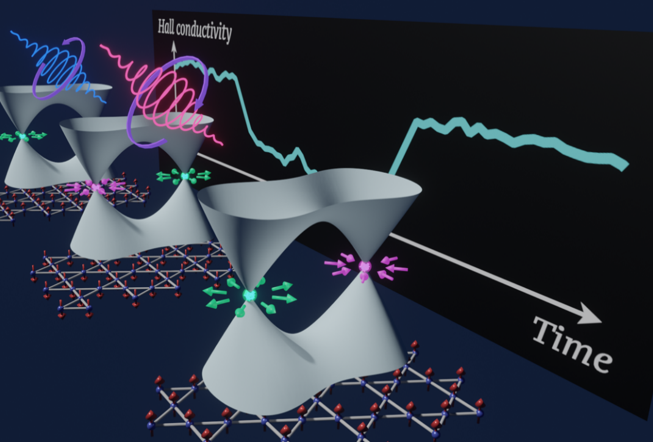Light reverses magnetization and chirality of Weil semimetals
News 2022/12/23
A research group led by Professor Ryo Shimano of the University of Tokyo's Research Center for Low Temperature Science, Assistant Professor Naotaka Yoshikawa of the University of Tokyo's Graduate School of Science, Graduate Student Kazuma Ogawa, and Professor Atsushi Tsukazaki and Associate Professor Kohei Fujiwara of the Institute for Materials Research, Tohoku University, under the JST Strategic Basic Research Program, has successfully demonstrated that the chirality and magnetization of electrons in a magnetic Weyl semiconductor, a type of topological material, can be reversed by light. The research group has succeeded in inverting the chirality and magnetization of electrons in magnetic Weyl semimetals, which are a type of topological material, by using light.
Electrons in Weil semimetals behave as if they were massless particles, Weil particles, and have a degree of freedom called chirality, which is characterized by right-handed and left-handed winding. In particular, electrons in magnetic Weil semimetals sense the pseudo-magnetic field generated inside even without an external magnetic field, and exhibit a huge anomalous Hall effect. The current produced by this anomalous Hall effect is a current without energy dissipation, and is expected to be used in various applications, such as next-generation quantum devices with low power consumption.
The light-induced magnetization/chirality reversal discovered in this study also inverts the sign of the anomalous Hall effect. This is a new method to control the properties of Weyl semimetals using light, since it is possible to control the magnetization and chirality of ferromagnetic Weyl semimetals using only light, without the need to apply an external magnetic field such as a magnet to invert the magnetization.
See below for more information.
- Aritcle URL : https://www.nature.com/articles/s42005-022-01106-8
- CRC (Cryogenic Research Center): http://www.crc.u-tokyo.ac.jp/index_e.html



